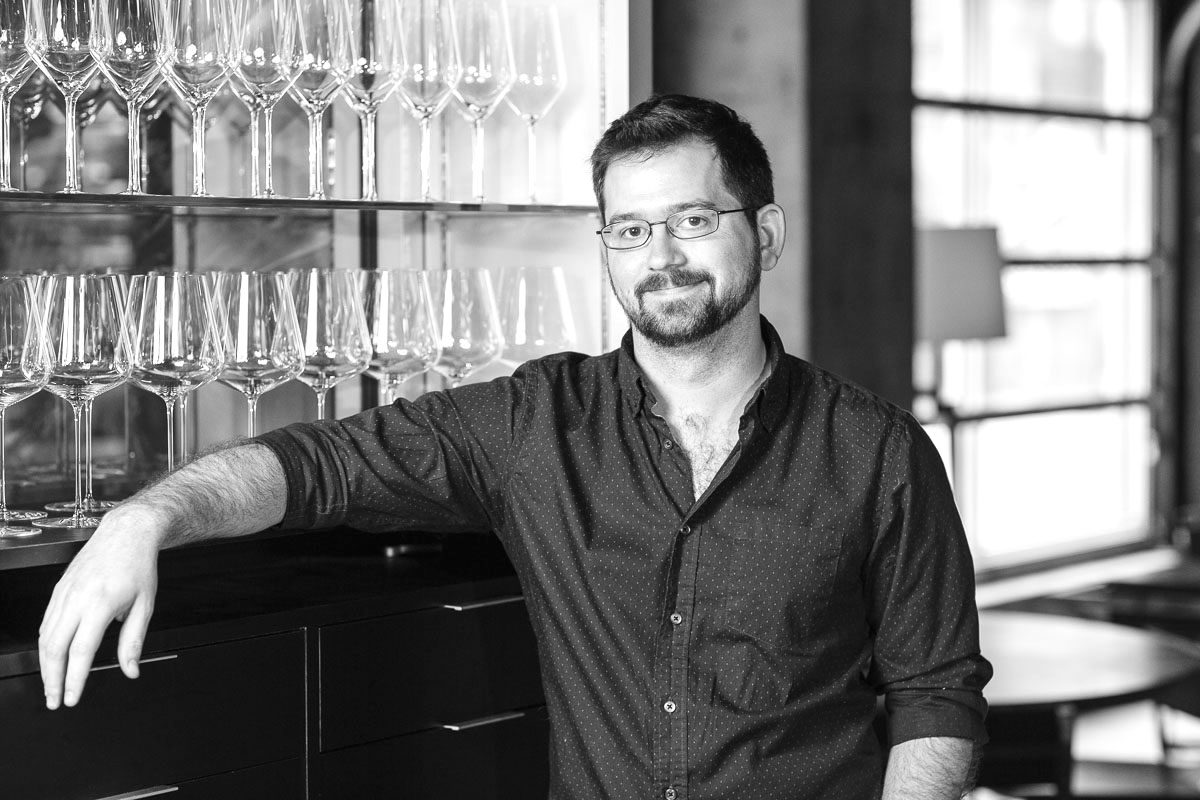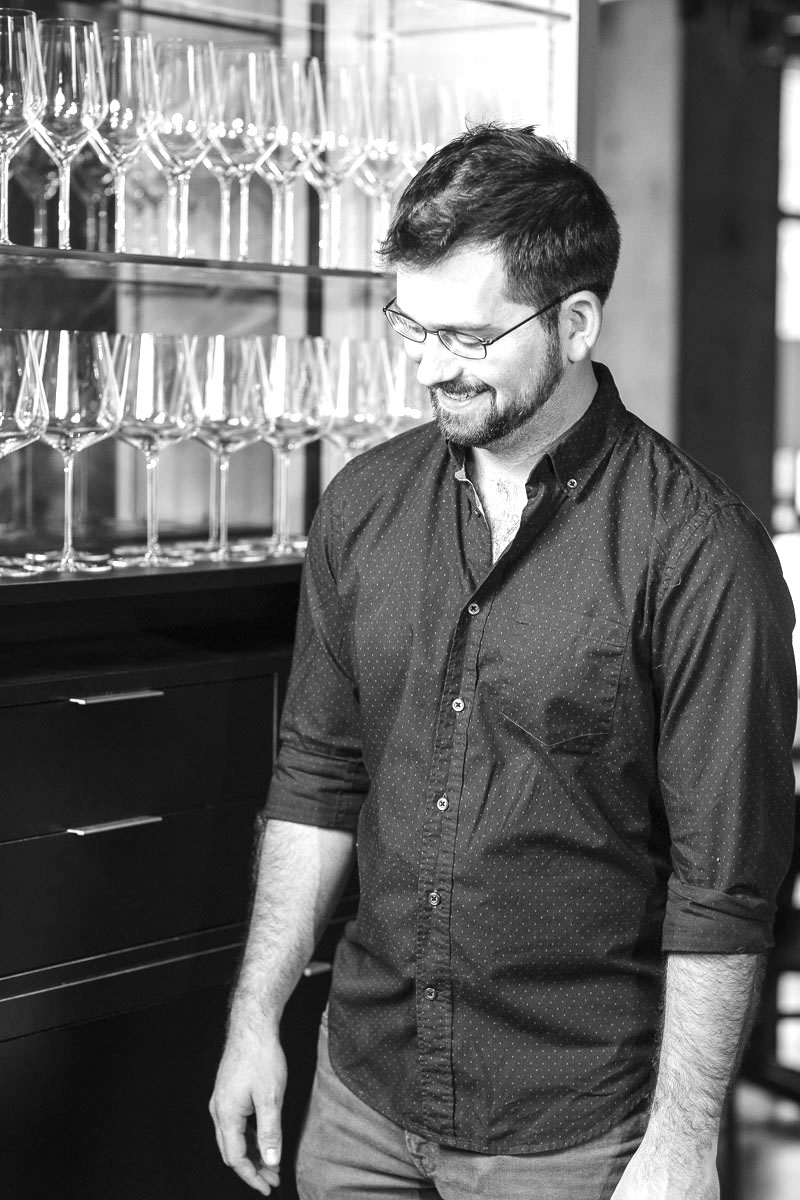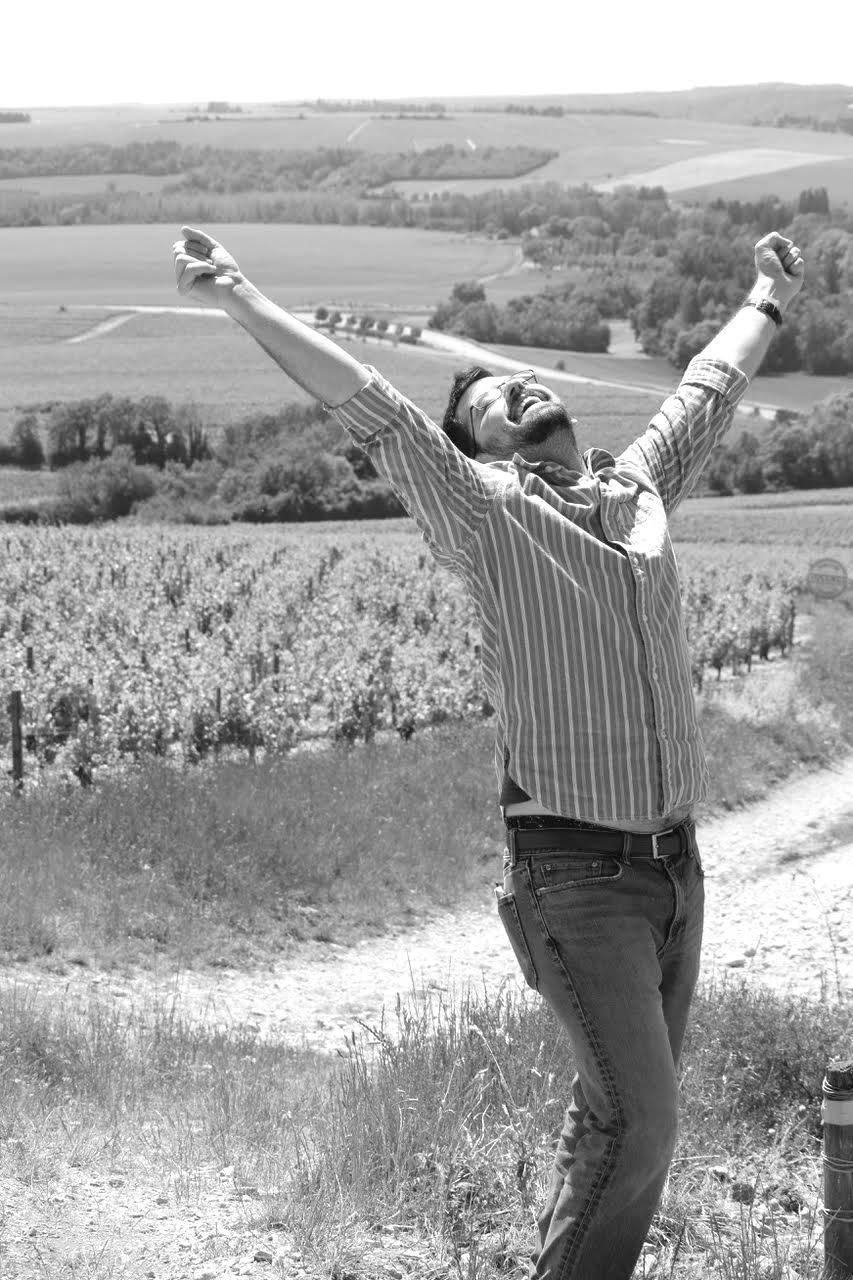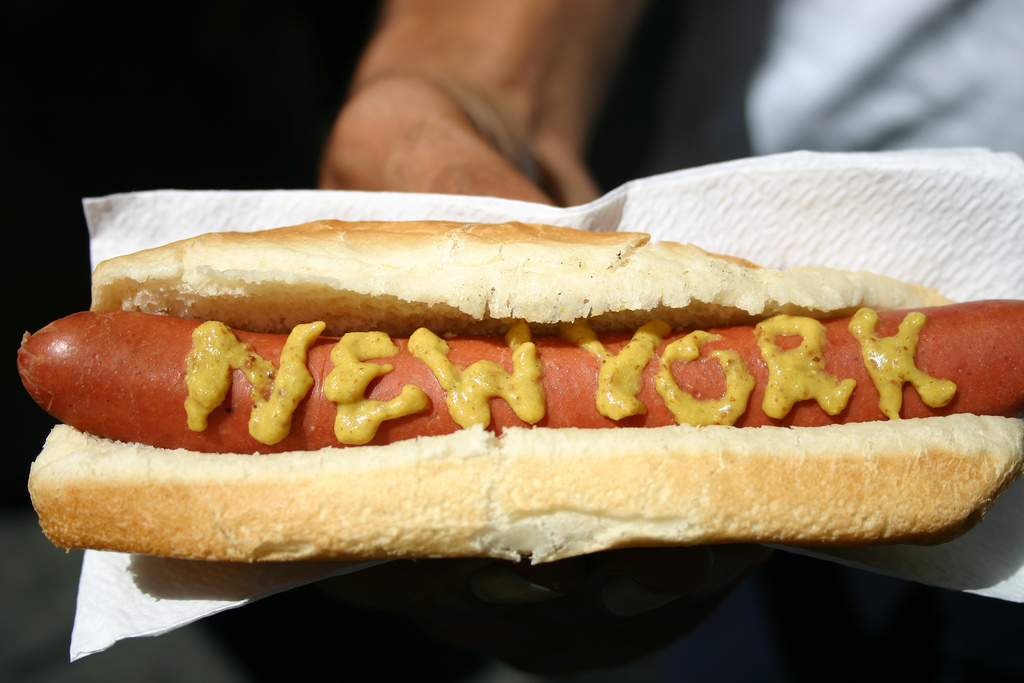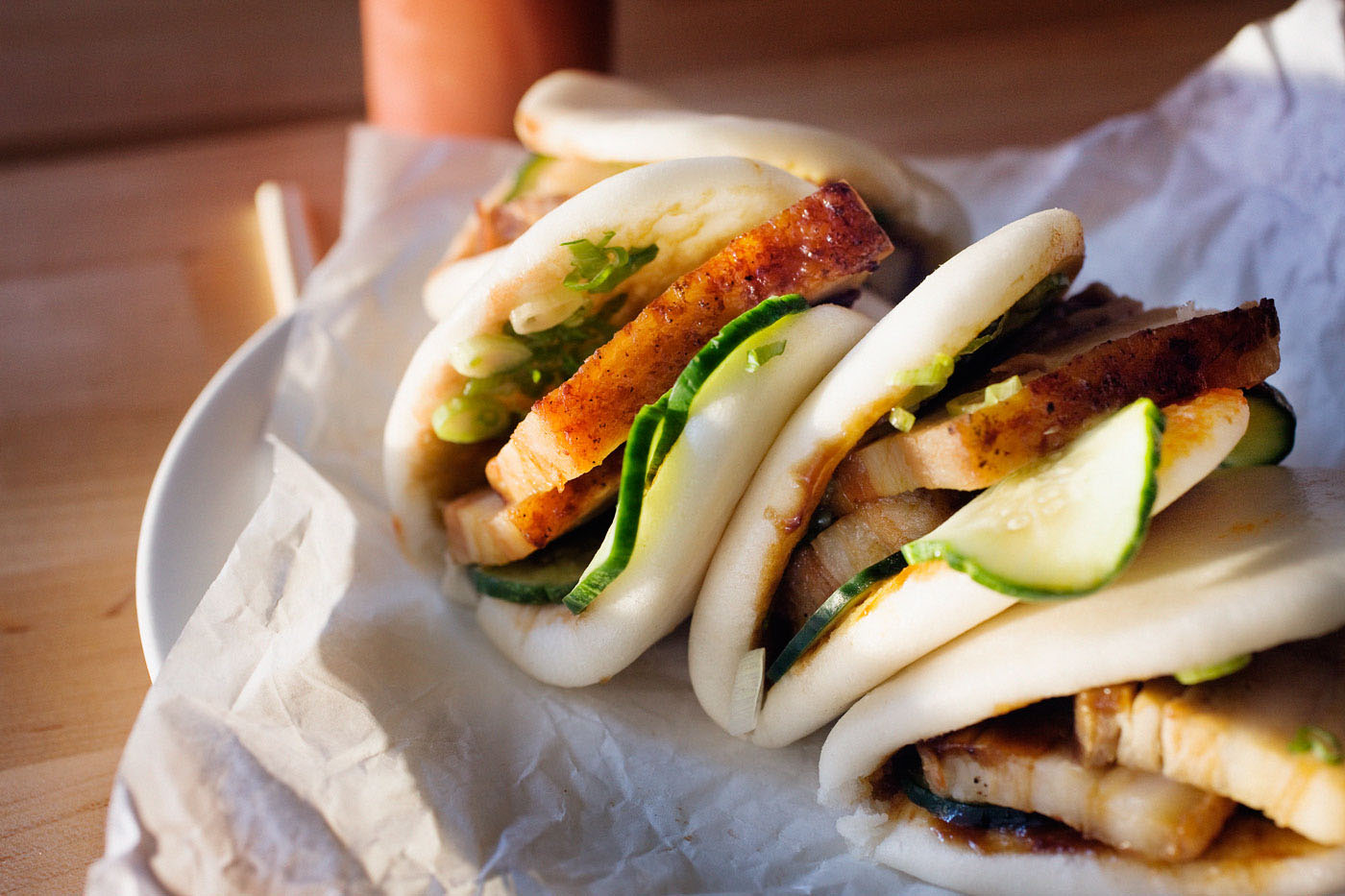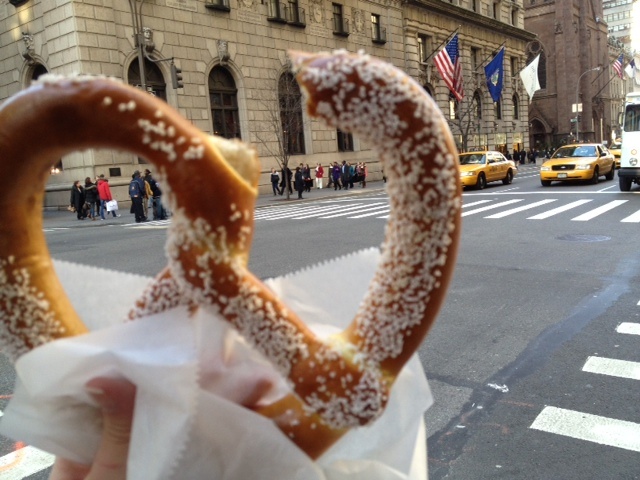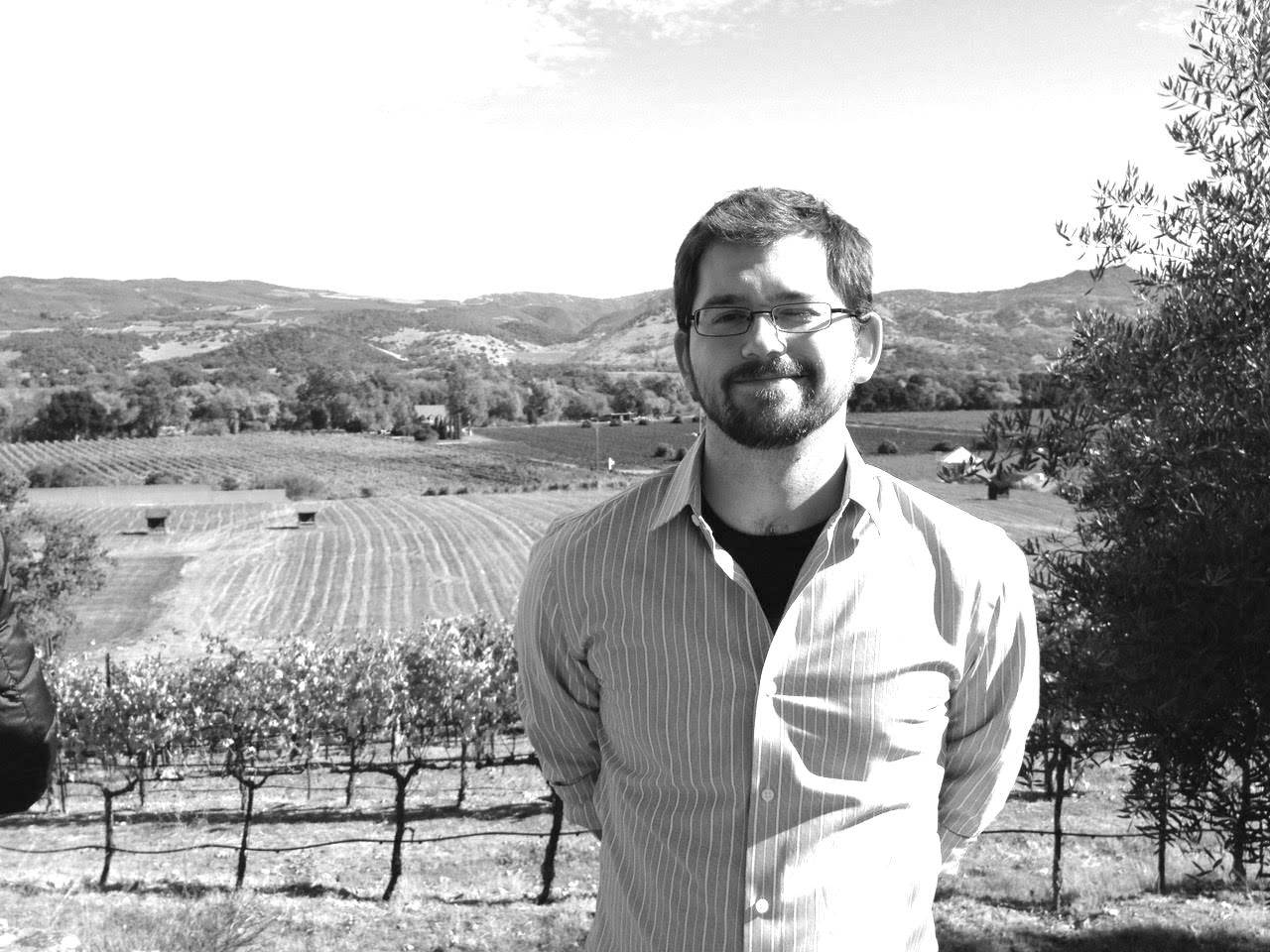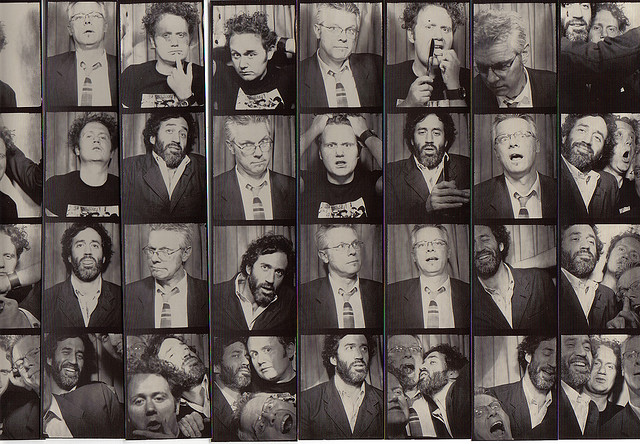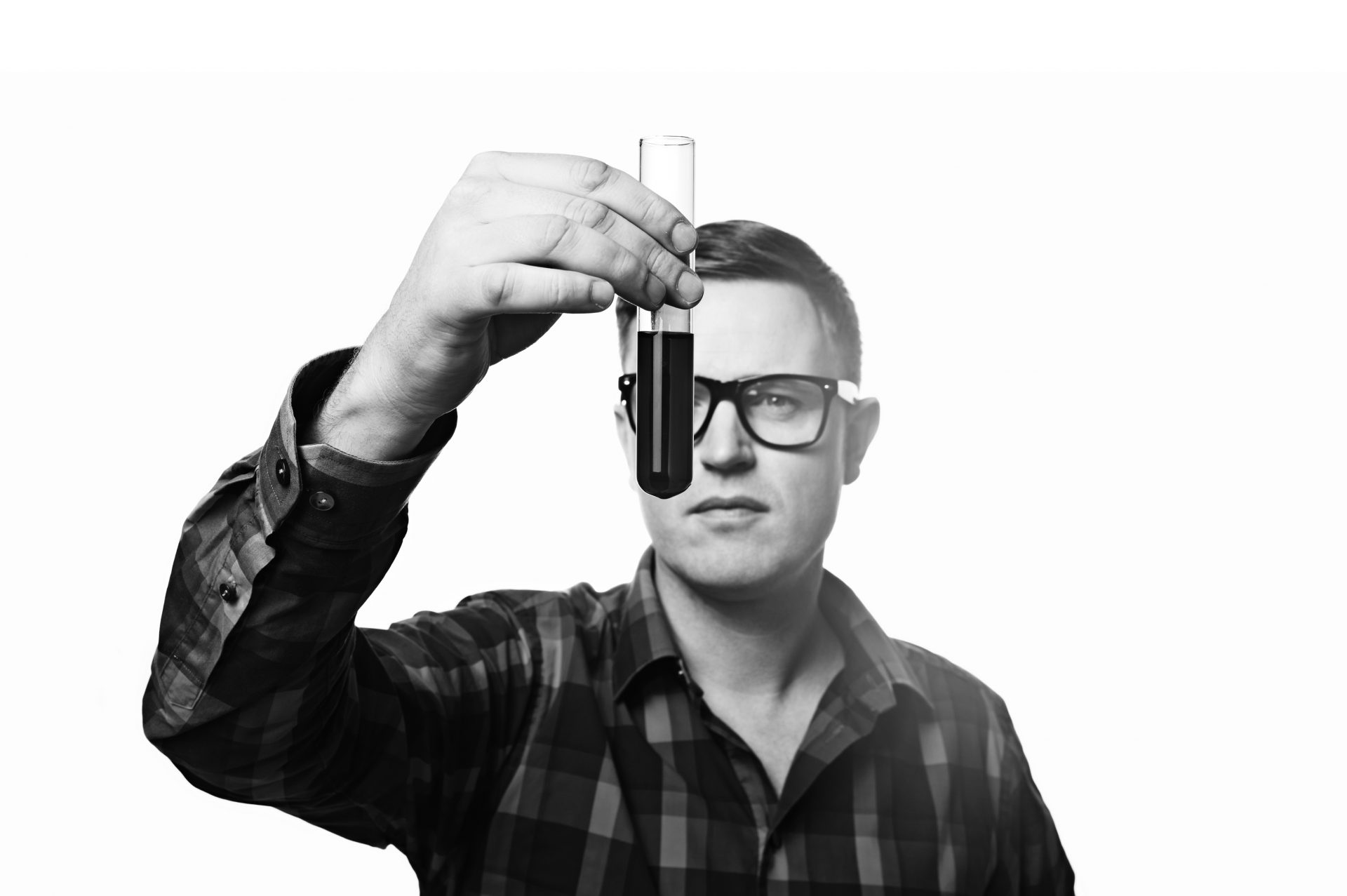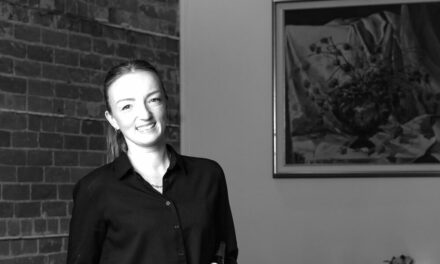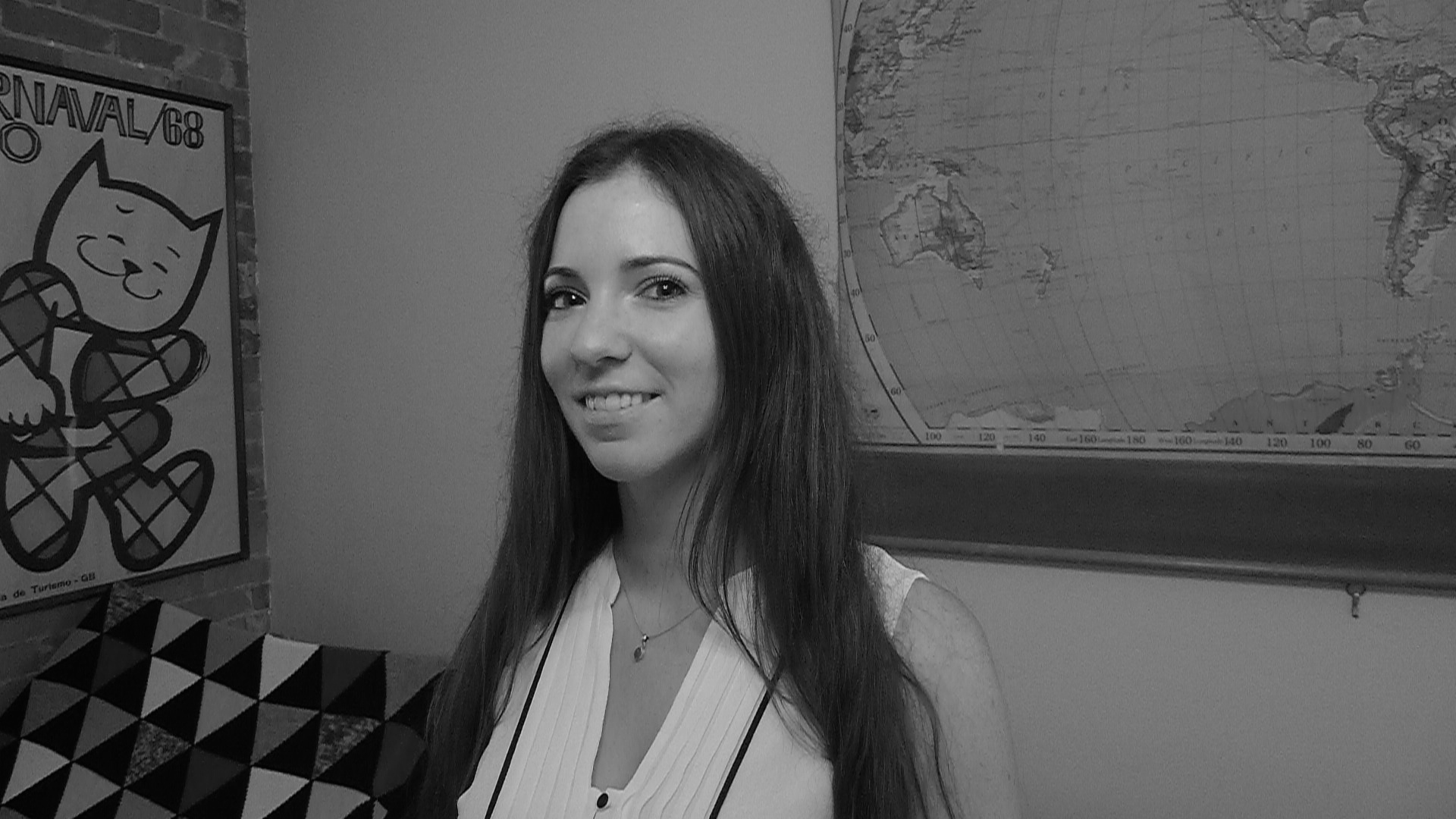In the first of an sixteenth (and wildly popular) series, we interview some of the most talented up-and-coming Sommeliers in Ontario (and occasionally from further afield as is the case this month). A few years back I was flicking through the pages of a locally published periodical and noticed that when it came to Sommeliers it was the same names that seemed to pop up over and over again. I was also becoming gradually cognisant of the fact that we more established wine folks were well and truly “losing our edge” to these young blood Sommeliers. Being well aware of the depth of new talent that was out there I finally decided to get together with a couple of fellow Toronto Sommelier “Old Guard” (Anton Potvin and Peter Boyd) to assemble a line of questioning that would give us an entertaining insight into the minds of these rising stars.
This episode sees an interview that took the best part of two years to get together.
Ladies and gentlemen, I give you the wonderful Jake Lewis, Beverage Director for Momofuku.
Good Food Revolution: So Jake, what is it that you are doing these days out in NYC?
Jake Lewis: I’m now the Beverage Director for Momofuku. I oversee all beverage programs at our locations throughout the US, including New York, D.C., and Vegas. Generally speaking, I ensure that the beverage departments are running well operationally and on course for programming.
GFR: And what kind of experience and training did you have before doing what you do today?
JL: Well, I cut my teeth at a couple of steakhouses in Texas as a Sommelier, did some retail, and worked in a brewery in Minnesota. When I moved to Toronto, I worked at Bar Volo while I got my feet wet, studied at the Sommelier Factory, worked at the ACC for a Leafs season, and finally got into Momofuku Toronto as a Sommelier at Daisho. I got my Advanced in 2015 not too long before we left Toronto. I’ve been in the beverage business in some capacity for about 10 years, and doing as much continuing education as possible to keep improving.
GFR: How would you describe your role at Momofuku?
JL: I steer the boat in terms of beverage offerings. My team runs the day to day operation of their individual programs and I keep them on course, make suggestions, train, and develop new programs as new locations come on board.
GFR: You have worked in a number different types of places… how does Momofuku compare? Tell us a little about the place for those who are unfamiliar…
JL: Momofuku is exciting. We’re always trying to adapt and be ahead of the curve. All of the menus are constantly shifting and there is no settling for a singular item that is ever ‘done.’ Even the items everyone knows and loves have been tweaked over time. We try do to the same for our beverage selection. In the states, there are 9 locations now, and no two are alike. We run the gamut from 2 michelin star tasting menu restaurants with a deep wine list of the ultra benchmark classics with age at Ko, to a program that focuses on the newest of the new world, to a small selection of beers and a smattering of wines at Noodle Bar. It’s a challenge keeping all of them in my head all the time, but it’s really exciting too.
GFR: How open do you find the clientele to trying new things when it comes to wines? Is there a specific style of wine that the demographic crave? And just what is that demographic?
JL: I find most of our guests quite receptive to new wines, particularly in New York. We also try to have wines that are a lateral move to more mainstream wines that we can show people. Our demographic is all over the place. We have regulars across the locations that come in for a beer and buns, and others that will come in and do a vertical of Raveneau.
GFR: What’s the size and scope of the wine/beverage program that you run?
JL: They range. Ko’s list is approaching one thousand selections, and we emphasize selections that are the best in the world and are aged perfectly. However, most of our locations are about 80-120 rotating selections to keep the programs concise and focused. Their scopes vary, but in general terms we prefer wines that support the food we serve. Those wines tend to be less alcohol or tannin driven, and about texture and acid. We also lean towards producers that spend most of their time in the vineyards focusing on the quality of fruit with as little intervention as possible.
GFR: How autonomous is your role? Does David Chang direct where you go with your purchasing? He quite enjoys wine, doesn’t he?
JL: For the most part, I’m left to my own devices, but David will ask to put something on occasionally. Our new president is a beverage guy so he’s always making great suggestions. Yes, Dave does like a good glass of white burgundy. Or a spritz. Or Bud Light.
GFR: Bud Light!!!
Does your job allow you to travel much? Where have you been lately?
JL: My travel time has been increasing this year. I go to DC and Las Vegas with increasing frequency. We opened Las Vegas in January so I lived there for about 6 weeks. We’re also working on some fun wine region trips as a team, which will be a great change of pace. I guess the most recent wine trip I went on was Napa in January of 2015. I’m overdue for a Eurotrip.
GFR: What sets NYC apart as a wine and food city? And how does Toronto compare?
JL: What sets New York apart from Toronto is availability of product mostly. For wine, we can get anything we want, and probably a decent amount of it. The same applies for food. Anything you want – any cuisine, specialty food, anything – is here somewhere. I think the biggest difference between New York and Toronto is the quantity. There are so many restaurants here. I can’t even begin to think about hitting all of the top spots. Toronto is great in the sense that it is such a tight knit community. Every supports each other. We could go to all of the bars and restaurants that are new or highly anticipated more than once in a year if we wanted to.
GFR: Since you left Toronto, what do you miss the most?
JL: I get a pang of jealousy when Barberian’s industry nights are rolling. I also miss how hilariously expensive American wines are at the LCBO. The really good Ontario wine producers were great to talk to and taste with, and they’re obviously a bit less easy to visit or talk to. Bellwoods Brewery was a 10 minute walk from my apartment and I miss their beers and the company that usually joined. I miss my coffee shop R2, but they closed this year sadly. The food and wine community was great to be a part of – I won’t get into that cause it gets gushy and I’ll forget someone.
GFR: Now, how do I word this? Have you drunk the “Natural Wine Kool Aid”? I’m just kidding, kind of… I’m sick fed up of “natural wine” zealots with nothing but derision for those who feel otherwise. Saying that, I do feel that there are some astounding “Natural” wines out there, so don’t get me wrong. How do you feel about the scene?
JL: Heh, I was waiting for the natural wine question. Here’s my piece. Natural wine is a spectrum. There is natural wine that tastes like awful and there’s natural wine made from the greatest producers in the world that is clean and pure and beautiful. I am very much in favor of a bit of funk in my wines, but it’s a fine line, and I know where I am on that spectrum. I do however, find a bit more precision to the greatest examples of natural and biodynamic wines. The most important aspect is the fruit. Growers that put the health of the vine and fruit first and foremost and are actually in the vineyards guiding those grapes through healthy fermentations with native yeasts, and elevage, will yield wines that have fruit, reflect terroir, have energy, and are enjoyable. I love the idea but if they’re not putting a ton of work into their product, I think it shows. I’m not going to be enthusiastic about a natural wine simply because it’s natural and tastes mousey. If I can’t imagine drinking more than a glass, I don’t want it. Now, if I don’t like a producer this year, I may next. I never dismiss a new wine grower because their wine was terrible last year. Sometimes it takes a few vintages to get it right, and I’m willing to wait if they’re willing to put the work in.
GFR: A terrific balanced answer right there.
What makes for a good agent/supplier/merchant in your mind?
JL: The best agents/suppliers/merchants are good communicators. They understand my needs, and listen to what I say rather than push solely their wine of the week. I do my best to reciprocate by responding to every email and being as transparent as possible. This goes right down to price points we are seeking, styles, and times. I keep appointments, communicate if I think I’m going to be late, and say no rather than ignore people. I hope for the same treatment. It’s a relationship, and the most professional of the industry understand that the relationship may extend beyond our current employment, so why spoil it?
GFR: And what makes for a bad agent/supplier/merchant?
JL: I wish it were more complicated, but a bad agent/supplier/merchant is simply a poor communicator, doesn’t respect my needs, and doesn’t understand the relationship part of the business.
GFR: How do you feel about Canadian wines? Do you ever see anything in your market?
JL: I dig Canadian wines. I think they have come a long way, and I am excited to start seeing them in our market here a bit more. We poured Norm’s County Chard in the pairing at Ko back in May, and we’re considering more as we’re evolving our programs. We’ll always be picky about what we carry, but they have a place at the table. Finally.
GFR: What do you think that we do well here in Ontario?
JL: I find Ontario to be the place for cooler climate varieties. Seems obvious but apparently it’s not. Chard, Cabernet Franc, and Riesling are where it’s at for me. I love a good Ontario Riesling. Oh, and Syrah can be cool if it lives long enough. Did I mention Riesling, yet?
GFR: And what do you feel we should really give up on?
JL: I’m not really sure what Ontario should give up on I think that with climate change, what I would have been thrown out when I first got there could possibly be delicious when the vines are old and the climate comes around.
GFR: How open are your customers to Canadian wines? Are they even familiar with anything outside of Icewine?
JL: I think that our customers in the states are still learning about Canadian wine. Even Icewine is obscure, and those that know Icewine are generally not fans simply because it’s sweet. I think that Icewines produced from more familiar varieties may help since I don’t think Vidal is a grape most people know. We’ll be focusing on dry wines from Canada as they begin to trickle onto our lists.
GFR: Just as there is from everywhere in the world, there is quite a lot of dreadful wine coming from Canada (BC, Ontario et al.) also. How do you feel about the issue of people simply promoting something because of it being local, and not because of its quality?
JL: I am absolutely against promoting local for local’s sake. Quality is first and foremost. I will taste your bad wine every year until you figure it out, but I’ll not list it until it’s good. I’d rather promote two great producers from a region than 10 bad ones just to say I promote local.
GFR: How aware of wine were you whilst growing up? Were you around wine from an early age?
JL: I didn’t really get into wine until college. Mostly magnums of Yellowtail around my family’s house growing up, and it wasn’t ever anything I was interested in.
GFR: Can you remember your first taste of wine?
JL: Wine in general? No. Wine that made me become aware of it? Yes. Must have been 2007 and It was a bottle of 1994(?) Pride Mountain Reserve (Vintner Selection?) Merlot. I think it was the Merlot. It’s fuzzy but I remember being called to the cellar before the shift at the steakhouse and the Somm and a few managers showed it to me. It was an explosion of flavor, and my palate just lit up. I couldn’t describe it at the time beyond excitement and shock. That was it. I was hooked.
GFR: When do you feel children should be introduced to the wonderful world of wine?
JL: I personally believe that introducing alcohol at a younger age can build a respect for it (watering it down, giving sips, etc.). Building in an understanding and appreciation for alcohol so it’s not abused is hugely important. Obviously this depends on the drinking age as well.
GFR: When did you first decide that you would like a career in wine?… and was it with a view to being a Sommelier yourself?
JL: I committed to the wine business while taking a Wine Appreciation class at the University of Houston. It basically solidified my departure from the kitchen. Coincidentally, at the steakhouse I worked at throughout school, the sommelier gig opened up right before I graduated.
GFR: So who or what gave you your first insight into the world of wine?
JL: Kevin Simon was my professor for Wine Appreciation and that was the first introduction to the world of wine. Pappas Grill Steakhouse was the place where I became immersed in it.
GFR: The Sommelier world is notoriously full of pretentious arseholes, and after seeing that film Somm I worry about the emergence of a new Bro culture… I’d love to hear your thoughts?
JL: Oh the pretentious sommelier bros exist. Wine should be viewed as a food of daily consumption and available to all people regardless of class or income. Everyone should drink wine and drink it with an open mind. There’s more than one way to serve it, more than way to drink it. It’s about joy and people, not your ego, Bro.
GFR: Which wine regions have you had the opportunity to visit?
JL: I have been to: Vinho Verde, Northern California, Pacific Northwest, Ontario, South Australia, and Victoria. Most fortunately, when we left Canada, we went on a crazy tour through Eastern France, Northwest and Central Italy, and Germany and hit a ton of regions.
GFR: Have you ever made your own wine?
JL: I have not made my own wine… to date.
GFR: And where would you like to make wine (in a pipe dream)?
JL: I think I would like to make wine in a coolish climate, steepish slopes, sunshine. Beyond that, I’m open. Know anyone selling? Santa Barbara? Germany? Oregon?
GFR: So do you prefer to manage people or bottles and why?
JL: Managing bottles is much easier, but I like leading a team. Hopefully, I’m helping our team grow to become better sommeliers and operators. I find that the right team really compels each other to be better.
GFR: What have been your career highs and lows?
JL: My career has certainly had it’s ups and downs. Minnesota was rough because there was definitely more of a focus on beer than wine. I’m glad I knew beer too or I would’ve had a career change. Things are on the up there now, based on the contacts I’ve keep in touch with in Minneapolis. As far as highlights, the day we had more bev sales than food sales in Daishō was exhilarating. Such a great shift. And I won the Johnston Medal in 2015 so that was cool.
GFR: Who is, in your mind, a real role model for Sommeliers?
JL: I think the role model sommelier is harder to define than it used to be, but I still admire those that work the floor most of all. It’s not sustainable in the long run, which is totally fine, but that’s who I want to be right now. And those that run tight businesses, and still mentor/educate at the same time are particularly inspiring.
GFR: And for Wine Agents/Importers?
JL: We enjoy working with small companies in New York with whom we can grow together. There are also a few small importers and distributors that are friendly with us that have wines that really just don’t fit with our programs that are really great about understanding that. They check in every once in a while and even just say hello or let us know when they’re having a bite.
GFR: Do you have nightmares about working with wines? I do… regularly… and it usually involves being unable to find bottles in a cellar… and the clock is ticking away… I have them all the time, and I haven’t been in the role for over seven and half years!!!
JL: Ha! That’s a great nightmare, Jamie. Only if I’m prepping for an exam… which I am so I’m just waiting on them. I’ll probably wake up mumbling subregions of Touraine AOP in the next few days. Or subregions of Great Southern. Or the various aging requirements for Spanish wines…
GFR: Sommeliers famously have their Sundays off… What’s your idea of a perfect Sunday?
JL: My perfect Sunday is simple: Sleep late. Cooking shows and breakfast. Something chill around the house. Nap. Dinner outside or somewhere nice and great wine. Study free and no work calls. Wife-time the whole time.
GFR: Where are your favourite places to dine and drink in NYC… perhaps tell us a hidden treasure of your city?
JL: We try to go out a few times a month to nice places if we can carve out the time. We like Katsui in our neighborhood for good omakase for a non-manhattan price. June is a fun wine bar near us in Brooklyn for a bottle of wine. Nomad Bar for a nice drink and meal. I guess those would be the most frequent. Wow, I need to get out more.
GFR: Do you cook yourself? What’s your favourite dish to cook these days?
JL: Not as much as I’d like, but yes. Tacos are my favorite food for a weeknight off. But I’ve been getting into a bit more Korean and have been playing with bibimbap variations. I enjoy an elaborate meal now and again, and will go out of my way and spend way too much at a proper butcher shop every so often. Sometimes it’s just needed.
GFR: And have you had any cooking disasters recently?
JL: I rarely have cooking disasters but I’ll give you this one. I ruined couscous, because it was not just the soak in hot water kind, on the same night that I completely butchered pan roasted cod by not having the pan hot enough. I was so irritated.
GFR: Do you feel that there is a good Sommelier community in NYC?
JL: I do like the sommelier community in New York. I was able to connect and get into some good tasting and study groups pretty early on. Everyone is both incredibly competitive and supportive at the same time. It’s occasionally hard to catch up with them, but we have a good time.
GFR: Do you hang about with other Sommeliers?
JL: I almost exclusively hang out with somms. It’s just who I’ve gotten to know first. I’m getting better about that though. I met a couple of them on the Somm Camp trip in 2014 and at the exam in 2015.
GFR: How do you feel about NYC as a wine and cocktail city? Where do you go if you need to get your wine or cocktail on?
JL: New York is such a great wine city. You can get anything you want regularly and in a retail shop. Cocktails are great too. I usually go to Leyenda, Clover Club, the Nomad for cocktails. Three’s Brewing (great beer AND a great space) or generic dive bars for beer. Believe it or not I don’t go out enough for wine, but the bar at the Modern or Maialino has happened somewhat recently. Prime Meats is close to my house and the Wine Director for the Frankie’s group is a great guy. Or… I end up at Ko.
GFR: What would you be doing if you were not doing what you are doing today?
JL: If I wasn’t in the wine business I would be in science probably. I’m fascinated by space, so astrophysics? I think carpentry would be great, too, and would be a different part of the brain to expand upon.
GFR: What are your thoughts on music in restaurants?
JL: Music in restaurants is critical. The best restaurants play music that can drive the vibe in the room. That’s first and foremost. I also enjoy places that play original, non-edited tracks. I think it shows a certain pride in the music that can hint in a pride that’s reflected in the product of the restaurant.
GFR: Do you have a favourite food/wine related scene in a film/movie or show?
https://www.youtube.com/watch?v=hwE4Ga5uIGs
JL: My favorite wine scene is from Fawlty Towers. Hotel Inspector episode. Go find it.
GFR: Oh, I know it well… a classic!
Do you have many non-industry friends… how do they feel about what you do for a living?
JL: I have a few non-industry friends. They think what I do is pretty cool, and they particularly like dining with us. I don’t see them often enough. It’s nice to have friends in different businesses where conversation can be about something other than restaurants.
GFR: What are your thoughts on blind tasting wine?
JL: I like blind tasting for a few reasons – the exercise hones your ability to describe a wine to a guest (if you remove most of the jargon), and it gives you a chance to create an opinion without the influence of the label or price.
GFR: Are you a better blind taster with or without a bad hangover? I’m definitely the former…
JL: I blind taste best when I’m squeaky clean. Hangovers screw up my perception of acid and alcohol. Badly. Some of my best tastings have been the first few after a long hiatus from blind tasting or even drinking in general.
GFR: What’s your current favourite wine region?
JL: Germany is my favorite region. I love Riesling, but even outside of that, there’s so much happening in Germany right now. Go find some Enderle & Moll Pinot Noir, or some sweet Scheurebe from Pfeffingen. The VDP is a bit of a soap opera at the moment, but what giant wine club isn’t? It’s also so deep that I can study it for years and never get bored.
GFR: In your mind, as Sommelier, what is “hot” in the world of wine right now? And why?
JL: Loire is a hot region right now. Someone discovered Saumur Champigny and made Clos Rougeard a cult wine – haven’t looked into who. And of course the popularity of Chenin is incredible right now. Pescaline probably caused that – and rightfully so. Jon Bonne recently wrote an interesting article in PUNCH about the Loire being the center of the natural wine movement and I think he’s spot on. The wines he suggests are great too. Savoie is also beginning to make some whisperings around these parts so we’ll see where that goes.
GFR: And what’s not so hot? What has fallen out of favour? I why do you feel that is?
JL: I’m not really sure what’s out of favor. I feel a bit odd on this one, as it seems all the regions I want to list are really starting to show some change. It’s kinda cool. Spain has some really great small producers being imported by some new guys that are really tasty. If Trumpet Wine comes your way, you all should taste. Alsace seems to be getting their ducks in a row to make a classification system that actually means something. Even some of Bordeaux is taking risks and focusing on their vineyards as opposed to tradition. Southern Hemisphere struggles in New York, but there’s cool stuff starting to show up that’s great from those countries, too. Australia in particular.
GFR: When it comes to wine is there anything that you feel is overrated?
JL: What’s overrated in wine? Color. Yeah, Cabernet is supposed to be dark, but Pinot isn’t. Why are you dismissing a wine cause it’s pale? It’s so bizarre to me. Color is certainly a lingering effect of an old mentality. Instagram is overrated for wine. Go find the most recent Noble Rot article on that topic. It surmises that by chasing the few wines that are instagrammed constantly we homogenize the market and it gets stale. I’ve been preaching this to my team as long as I’ve been running the show.
GFR: What is your favourite wine pairing right now, something nice and seasonal?
JL: The most recent was probably a bottle of Escoda Sanahuja Els Bassots Chenin at Night + Market in LA when my wife and I were in town visiting friends. It was a risk because it is a weird natural wine, but it went so well with the funky spice of the entire meal. It was a surprise. Now in retrospect funk paired with funk highlights the fruit and other flavors so it makes sense. It helps that our dining companions were down for anything. We just added an Uni sort of Chirashi dish at Ssäm that was really great with Donnhoff Oberhäuser Leistenberg Kabinett 2016. As far as something seasonal, I love fresh shell peas. We make a risotto with those at home and I usually like to have something like Franz Hirtzberger Gruner with that. His Gruners are always lively and fresh.
GFR: Okay… three pairings with me on the spot?… this time with… Hmmmm… NYC classics
What would you suggest to pair with them wine or beverage-wise… and why?
- The NYC Hot Dog
JL: Miller High Life. Really just fits. If I’m crushing a dog at a ball park, I want a beer that quenches and is refreshing. No hops that would magnify the mustard, please.
- The NYC Pork Bun
JL: Easy – Lauer Barrel X 2016. Acid, kiss of sugar and that fatty pork with hoisin. Perfection.
- The NYC Pretzel
JL: Good ol’ glass of bottled coke. Salty and sweet, and not everything has to have alcohol…
GFR: Do you often drink beers, ciders or spirits? What do you currently enjoy?
JL: Yes I do dabble in the world of non-wine beverages. Quite often. I enjoy Amaro of various kinds. My current favorite cidery is Shacksbury from Vermont. Beers – basically anything from Three’s Brewing because they have the right attitude about what beer should be. I’ve gone away from double/imperial beers, and want 5-6% refreshing IPA’s, lagers, or farmhouse styles generally. Oh and whiskey – Japanese, more subtle scotches, and bourbon. Been doing more of the Japanese and scotch lately.
GFR: What is your least favourite part of your job as a Sommelier?
JL: My least favorite part of the job is inventory and systems management. I’m pretty good at it at least, but it’s a lot of time. That aspect is improving though. The people that always reject the first bottle is particularly frustrating when in service.
GFR: Inventory was my own personal hell.
What is your weapon of choice when it comes to a corkscrew?
JL: The Pulltaps double hinge or even the Rabbit double hinge is great for me. I’m not fancy. And I lose and break stuff, so while I like the blade on the Code 38, I’m afraid I’ll lose it. I also really like a double hinge and the fancy ones don’t have them.
GFR: And your thoughts on the Coravin system?
JL: I use the Coravin for my own tasting purposes mostly but have previously used it in restaurants. I think it’s incredibly useful for pouring high cost wines BTG (provided there is some movement), but I do think there’s a shelf life to the wines.
GFR: Speaking of which, where do you stand on the screwcap vs. cork debate? And how do your customers feel about that?
JL: I think smarter corks are better than natural cork. DIAM corks seem to do quite well in my experience with them. I don’t mind screwcaps though. Traditional corks, yeah, I’ll partially concede to Bruce on that one. I kind of expect a phone call from him anyway, because I find producers that put the work into their corks have a fairly solid success rate, and I’m sure he disagrees. I don’t think I’ve ever had a guest comment without prompt on the subject. We taste everything before it hits the table, so ideally the guest never see a corked wine anyway.
GFR: Due to us being around alcohol, many people in our industry often have quite the increased tolerance for wine/booze, or they develop issues. What is your limit and how do you keep yourself in check?
JL: Yes, controlling alcohol consumption is always on my mind. I don’t drink too much when I’m at home. If I’ve been tasting all day, I usually just don’t at night. I have sober days to get back to normal after event heavy periods of time. I keep a lot of tea around the house for those times.
GFR: Have you ever been “cut off”? If so, where and when was the most recent time?
JL: I have not been cut off. I did have the worst hangover of my life about a month ago, but no cut off. I usually stay pretty aware of where I’m at in my ability to consume.
GFR: Speaking of which, do you have a good hangover cure?
JL: I have no magical formula for a hangover cure, sadly. I drink a ton of water and take 2 advil before bed. Repeat upon waking, and enjoy a greasy breakfast. Back to sleep if possible. I always recommend a sports drink or pedialite of your choice if you’re unable to drink a lot of water during the drinking session itself.
GFR: How many wines do you taste in a week?
JL: It varies but I’d say I probably taste an average of 50 wines each week. Sometimes more.
GFR: When tasting with agents do you choose to spit or swallow?
JL: When I taste with agents, I spit 90% of the time. I have phone calls, meetings, and a shift to run.
GFR: I wish that I had been as disciplined as you back in the day!
What’s your “house” wine at home?
JL: We keep various crispy whites around the house for daily drinking. Rarely more than one of the same wine is in our cooler at one time.
GFR: Most remembered glass of wine ever?
JL: My most remembered glass ever is 1993 Dujac Clos de la Roche in their cellar. Crap year, maybe the best bottle for the entire eurotrip. My part of the group got forgotten in a parlour for the beginning of the tasting and Diane made it up to us in spades. Absolutely stunning. Such energy balanced with great fruit, earth, and structure. So good. I’m coming around on that vintage..
GFR: What is your perfect glass (or bottle) of wine at the end of a crazy day at work?
JL: At the end of a wild week or day, I’ll open a Burgundy or Barolo with age if I have one in the cellar. There’s always Riesling in there, if not. If I’m particularly light on selection, straight to whiskey.
GFR: And now the cheesy question Jake… If you were a grape varietal which would you be? and why?
JL: Wow, what grape would I be and why. That’s a tough one to answer and remain humble? Chenin Blanc? Can be serious but doesn’t have to be. Big range. Even the best ones aren’t that expensive and I firmly believe that price doesn’t dictate quality.
GFR: Thank you for taking the time Jake.
JL: Thank you, Jamie! Glad we were finally able to do this.
Edinburgh-born/Toronto-based Sommelier, consultant, writer, judge, and educator Jamie Drummond is the Director of Programs/Editor of Good Food Revolution.
Peter Boyd has been a part of Toronto’s wine scene for over two decades. He has taught the Diploma level for the International Sommeliers Guild, and has been the sommelier at Scaramouche Restaurant since 1993. He also writes about wine, food and pop culture and raises show molerats for fun and profit. He’s also one of the most solid guys in the business.Trust this man. Seriously… he knows his shit and is slowly taking over this city. He just celebrated his 67th birthday!
A well-known and much respected figure on the Toronto food and wine scene for almost twenty years, Potvin has worked in many of the city’s very best establishments including Biffs, Canoe, and Eau. In 2004 Potvin opened his incarnation of the Niagara Street Café, a restaurant that has gone from strength to strength year after year, with universal critical acclaim. Anton spends much of his time traveling and tasting wine and has been ranked highly in consecutive years of the International Wine Challenge. Anton is now GM at DaiLo with Chef Nick Liu.

